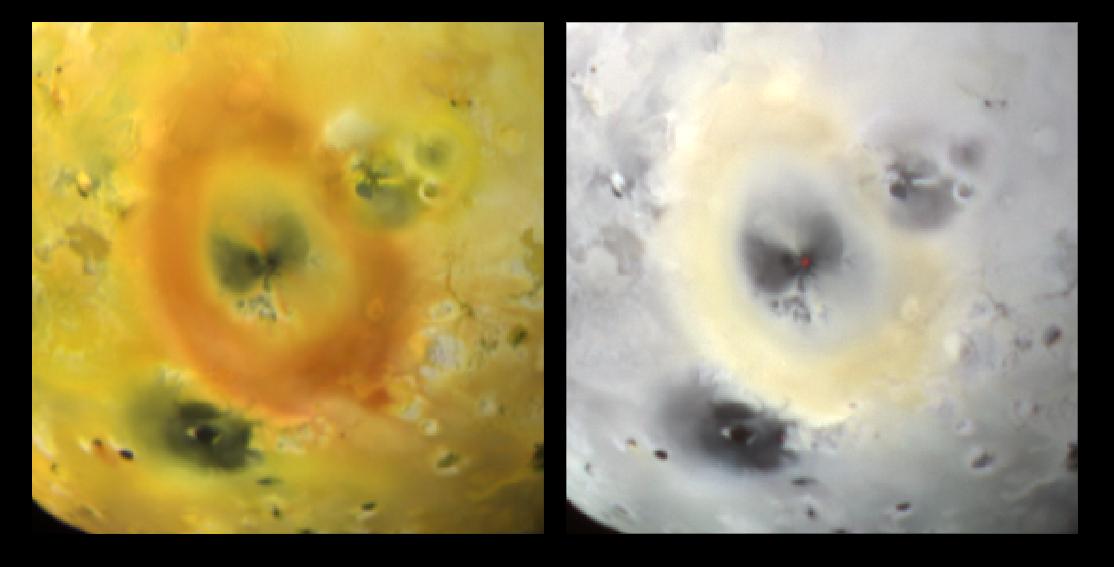

Brightly glowing lava from the volcano Pele is seen in this image taken by NASA's Galileo spacecraft as it receded from its close flyby of Jupiter's moon Io on October, 1999.
The image at left shows Io's surface in approximately true color, centered on the large red ring of sulfur that was deposited by Pele's plume and reaches more than 1,300 kilometers (800 miles) in diameter. A false color, infrared composite of the same region is shown on the right. The dark red dot at the center of the ring (seen in the false color picture) is the glow of hot lava at the heart of the volcano. Temperatures up to 1,027 degrees Celsius (1,880 degrees Fahrenheit) have been measured previously for Pele's lava. The glow is bright enough to be imaged in daylight, allowing scientists to precisely pinpoint the eruptive center.
The region imaged is centered on 18 degrees south, 255 degrees west, and is almost 2,000 kilometers (1,200 miles) across. North is toward the top of the picture and the sun illuminates the surface from the west. Launched in October 1989, Galileo entered orbit around Jupiter on December 7, 1995. The spacecraft's mission is to conduct detailed studies of the giant planet, its largest moons and the Jovian magnetic environment.
Image produced by: Paul Geissler, Planetary Image Research Lab. (PIRL), Lunar and Planetary Lab. (LPL), University of Arizona
The Jet Propulsion Laboratory, Pasadena, CA manages the Galileo mission for NASA's Office of Space Science, Washington, DC. JPL is a division of the California Institute of Technology, Pasadena, CA.
This image and other images and data received from Galileo are posted on the World Wide Web, on the Galileo mission home page at http://galileo.jpl.nasa.gov/. Background information and educational context for the images can be found at http://galileo.jpl.nasa.gov/images/io/ioimages.html.
NASA's Planetary Photojournal PIA-02510
November 19, 1999